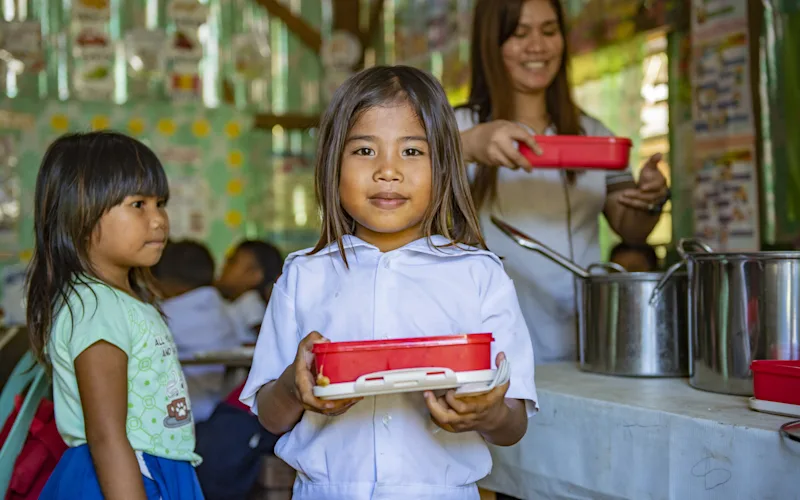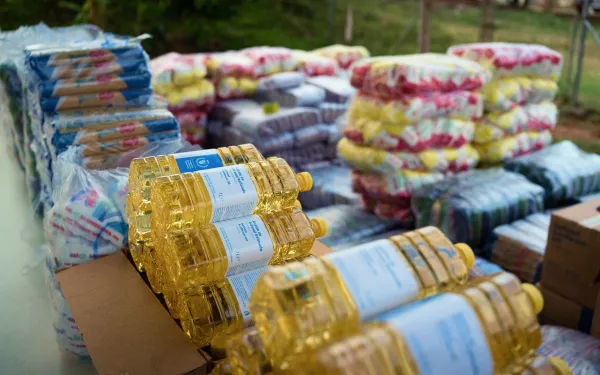

What’s inside a typical WFP food basket
Rice or flour
A staple item in many countries and vital source of daily energy.
Vegetable oil
Rich in essential fats and vitamins, supporting a healthy immune system.
Lentils or beans
Plant-based protein and fibre, helping maintain a healthy heart and gut.
Salt
Supports a healthy pregnancy and helps child development.
The food basket is based on local food preferences and diets wherever possible so the items could vary.
While still recovering from recent earthquakes and storms, tropical storm Tino affected 2.7 million people in the Philippines. WFP is supporting the government with preparedness efforts and delivering life-saving food and cash assistance as the country braces for potential super typhoon Uwan.
Overview
Shared meals will provide emergency support, school meals, nutrition assistance and support resilience projects.
Around 18 million Filipinos are living below the poverty threshold with malnutrition being one of the biggest problems. Food insecurity in the Philippines is a persistent issue and nearly a quarter of children are stunted — meaning they have not been able to grow or develop properly. One of the most natural disaster-prone countries in the world, the Philippines faces frequent climate shocks, worsening food security. The World Food Programme (WFP) is on the ground supporting the Government in achieving food and nutrition security in the Philippines. One method is the e-voucher programme. Each voucher is loaded with US$55 (PHP 3,000) which families can use to purchase nutritious food from selected shops. WFP Philippines is also supporting the national school meals programme — working with smallholder farmers to provide schoolchildren with nutritious, locally-sourced food. Finally, WFP is supporting vulnerable communities affected by climate disasters with innovative technology to help them prepare and respond to shocks.
Location
Philippines